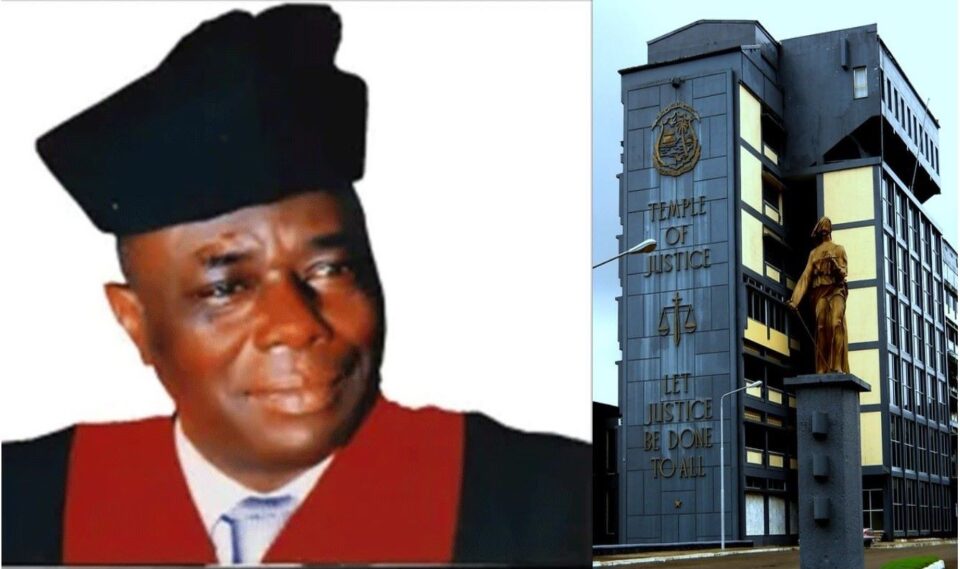150 Judiciary Employees Misplaced, 92 Have No Academic Qualifications
Amid Challenges:
- Poor recordkeeping and absence of standardized personnel files.
- Resistance and intimidation from some staff during the verification process.
- Weak attendance monitoring and a lack of automated systems.Strategic Recommendations
- Poor recordkeeping and absence of standardized personnel files.
- Resistance and intimidation from some staff during the verification process.
TEMPLE OF JUSTICE, Monrovia- Based on a request from the new Chief Justice of the Supreme Court of Liberia, the Civil Servants Agency (CSA) through the Judiciary Credentials Audit presented a Judiciary credentials audit report to Chief Justice Yamie Quiqui Gbeisay, with several discrepancies uncovered, as Garmah Never Lomo reports.
The report, which was presented at the Temple of Justice, seat of the Judiciary on Tuesday, September 23, 2025, uncovered 150 employees of the Judiciary staff to be misplaced while 92 staff had no academic qualifications.
The Judiciary credentials audit which commenced on August 27,2025, reviewed 674 academic credentials but of 674, 426 (63%) had authentic and verifiable academic credentials.
Credential Verification Reports
- Of the 674 verified staff, 426 (63%) had authentic and verifiable academic credentials.
According to the report presented by the CSA Director General, Josiah F. Joekai said, 56 cases (8%) of unverifiable or questionable documents were flagged for further investigation. These documents were set aside and sent to the relevant academic and professional institutions for third-party authentication. They are all appended.
Dr. Joekai added that a concerning 92 staff have no academic qualifications, while 243 hold only high school diplomas.
Workforce Profile
- Gender distribution:
The report highlighted gender distribution of which 70% male, 30% female – indicating a significant gender imbalance. Research suggests that a diverse and inclusive workforce enhances efficiency and productivity.
- Retirement status:
The report indicated that 11% of staff are already at or above retirement age, while 22% are approaching retirement within the next decade. This potential gap necessitates succession planning to be addressed.
- Deployment analysis: 484 staff are rightly placed, 150 are misplaced, and 40 are underqualified for their roles.
- Payroll System Concern
- The exercise uncovered a dual payroll system within the Judiciary: A CSA-managed taxable payroll, compliant with the Remuneration and Standardization Act of 2019.
- A non-taxable payroll jointly managed by the Judiciary, which contravenes statutory laws and CSA regulations.
- This dual system undermines transparency and accountability in public finance.
Challenges
- Poor recordkeeping and absence of standardized personnel files.
- Resistance and intimidation from some staff during the verification process.
- Weak attendance monitoring and a lack of automated systems.Strategic Recommendations
Your Honor, here are the strategic recommendations:
- Payroll Consolidation: Immediately transition all staff to the CSA-managed unified payroll system to ensure compliance with the law and eliminate irregularities.
- Credential Integrity: Suspend staff with severe credential discrepancies pending third- party investigation and permanently remove them from the payroll if documents are fraudulent.
- Reclassification: Redeploy/reclassify the 243 staff with high school diplomas and 92 unqualified staff to positions aligned with their educational levels.
- Attendance Enforcement:
- Block/payroll-delete staff absent beyond 14 days without justification.
- Suspend those absent 7–13 days.
- Pro-rate salaries of those absent 4–7 days.
- Introduce biometric or electronic attendance systems to strengthen monitoring.
. Workforce Development:
- Implement performance-based appraisals.
- Expand vocational/technical training, scholarships, and adult education opportunities.
- Establish structured promotion pathways to encourage upward mobility.
Governance Reforms: Digitize HR records, synchronize payroll and personnel data, and enforce a one-person-one-payroll policy.
Conclusion
The verification exercise has provided the Judiciary with a comprehensive baseline of its workforce profile, highlighted systemic gaps, and offered clear corrective actions.
Effective implementation of the recommendations will:
- Restore transparency and accountability in personnel and payroll management.
- Ensure merit-based deployment and career progression.
- Enhance service delivery and public trust in the Judiciary.
The Civil Service Agency stands ready to work in partnership with the Supreme Court
leadership to institutionalize these reforms for long-term efficiency, professionalism and sustainability.

